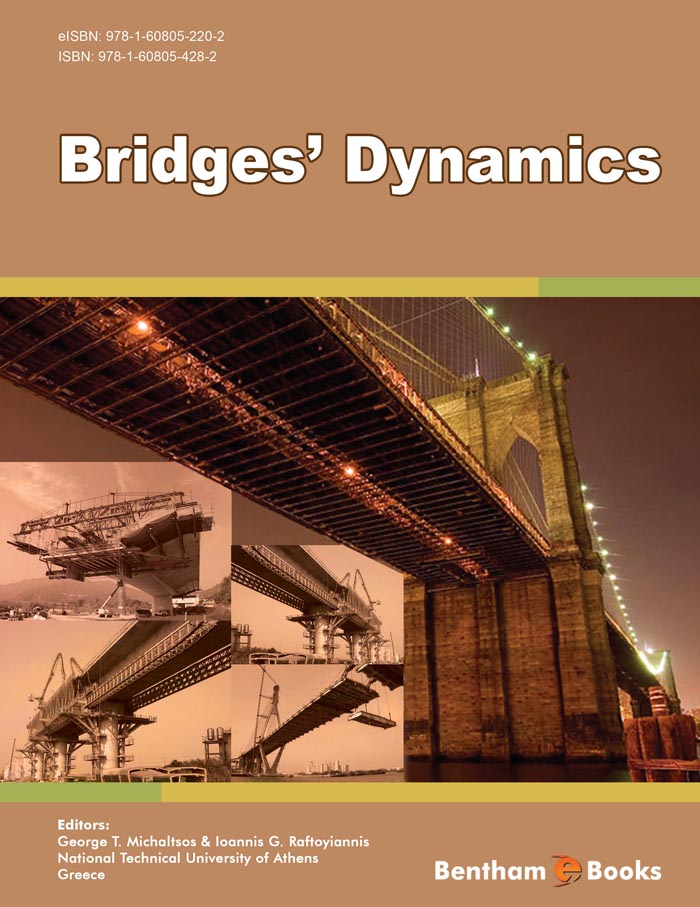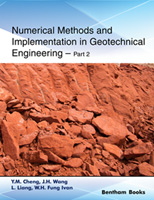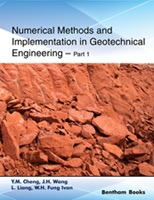This book deals with the problems arising from the dynamic distress of a bridge. Up to now, there is not a book containing the main objects and factors related and affected the dynamic behavior of a bridge. The present book focuses on this goal.
After an extensive introduction, in which it is exposed not only the evolution of bridges but, also, an historical review of the research and the influence of each bridge destruction on this research (first chapter), the dynamic loadings are studied (second chapter). The dynamic wind loads, the aeroelasticity principles, the earthquake loadings, the air blast ones, the moving loads and their modeling are the objects of second chapter.
The third chapter deals with the dynamic analysis principles. Firstly, the needed mathematical concepts are exposed, as for example: elements of calculus of variations, the d’ Alembert principle, Lagrange’s equation, the Hamilton principle, the equations of Heilig, and the ð and H functions. Afterwards the general equations of dynamic equilibrium are concluded and the main methods for their solution are exposed, while the axial, bending and the coupled lateral-torsional free and forced vibrations are studied determining simultaneously the corresponding orthogonality conditions. It is also exposed the nature and the influence of the internal and external damping.
The fourth chapter deals with the problem of moving loads. After a short historical review the strict theory of the moving load-mass is exposed and the general equation of motion is found through the use of Hamilton principle, while the influence of a lot of factors are studied, as for example the damping, the speed, the load’s eccentricity, the influence of a real (of two axles) vehicle, the influence of the mass of the load, and of the secondary mass-forces (Coriolis and centripetal). Finally, the real conditions of the support of a load are studied and also the influence of the deck’s irregularities and deck’s roughness.
The fifth chapter deals with the movement or rotation of bridge supports and the determination of the influence functions, while are studied the one, two, and three span beams. Finally the influence of the pylons’ height and their different movements are studied.
In the sixth chapter is studied the bridge as a static system under dynamic loadings. They are studied: the one, two, and three spans beam, the arch bridges (circular and parabolic), the cable-stayed bridges (of radial and harp system) through a new analysis aspect, the suspended bridges, and the curved in plan bridges. For all the above static systems are given formulae for their eigenfrequencies, shape functions and orthogonality conditions.
The seventh chapter deals with the problem of aeroelasticity. Firstly the exact theory of Theodorsen is exposed and, after, the aerodynamic loads of bridges are studied and the main models are shown, while are also studied the buffeting forces. Finally, the factors for the 2D and 3D problems are given. Afterwards the distress of a bridge caused by galloping, torsional divergence, and flutter is studied. For the completeness of the chapter, elements of the theory of modeling are given and the way of bridge’s study through the use of air-tunnels is briefly exposed.
In the eighth chapter, the mathematical theory of dynamic instability is developed for problems in plane (2D) or in space (3D). The basic equation of Mathieu-Hill is studied and the Bolotin’s pioneer studies are exposed. Illustrative examples for the dynamic instability of the alone cable, or of a bridge pylon, or of a cable-stayed or a suspended bridge are given.
In the last chapter, the absorb systems are studied. The passive, active and semi-active systems are presented and their properties and operation are analyzed in detail. The alone absorber and the system bridge-absorber are mathematically probed, while the equations governing the behaviour of such a system are given and solved.
George T. Michaltsos
Ioannis G. Raftoyiannis
Civil Engineering Department
National Technical University of Athens





